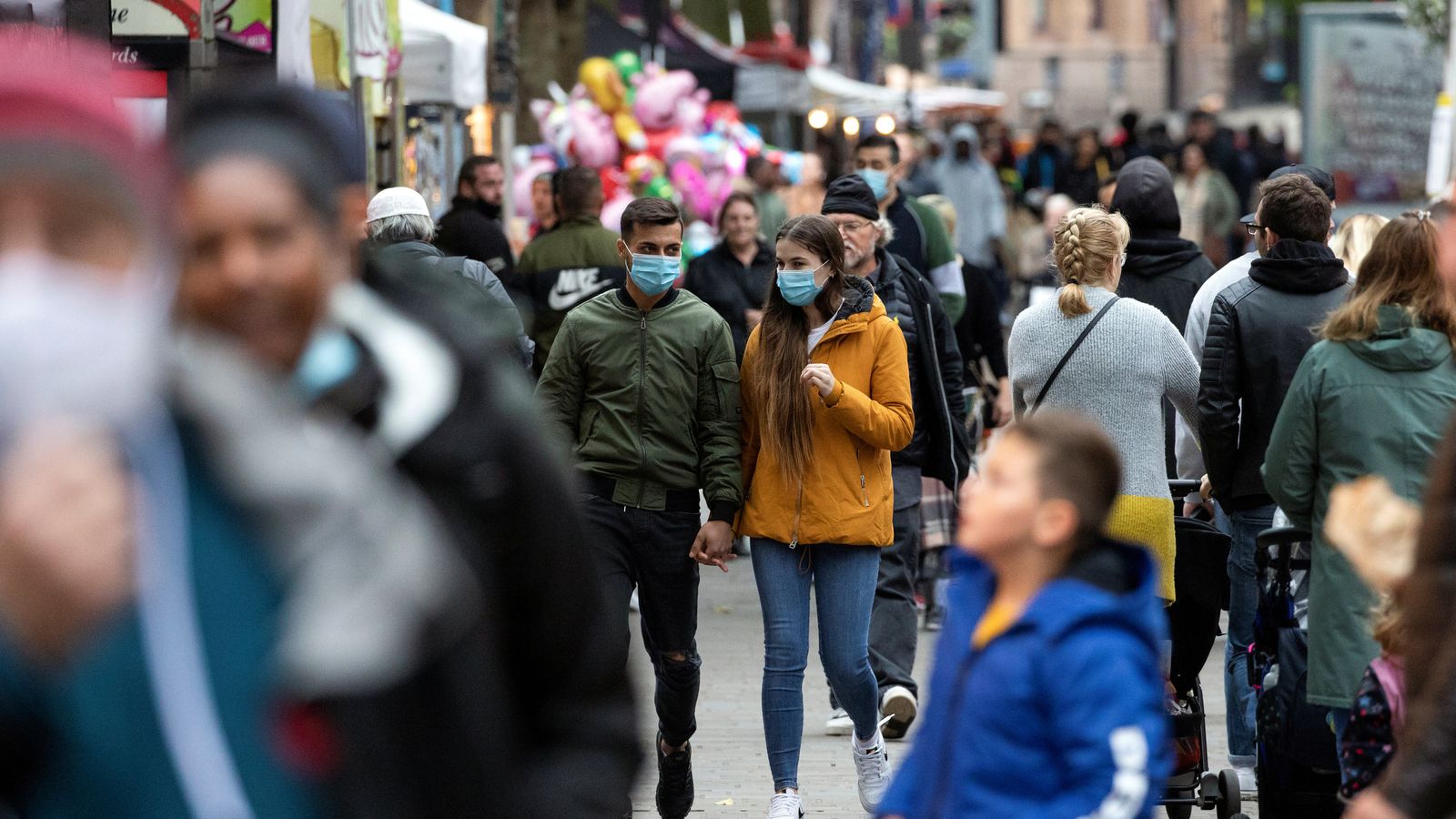COVID-19 and flu are co-circulating this year for the first time and those who catch both are twice as likely to die, early evidence suggests.
Jenny Harries, chief executive of the UK Health Security Agency (UKHSA), also warned that there could be multiple strains of flu ahead of an uncertain winter.
Speaking to Sky’s Trevor Phillips on Sunday, she said what is different this year is that COVID and flu are co-circulating – which increases the risk of serious illness and death.
Asked how worried the public should be about flu this winter, she said: “We should be worried about flu each winter. I think people still don’t realise it can be a fatal disease. Recent studies suggest that about 25% of us don’t actually understand that. On average, over the last five years, about 11,000 people have died with flu-related conditions.
“But I think the important thing about this winter is, we are likely to see flu, for the first time in any real numbers, co-circulating with COVID.”
She added: “So the risks of catching both together still remain. And if you do that, then early evidence suggests that you are twice as likely to die from having two together, than just having COVID alone.
“So I think it’s an uncertain winter ahead – that’s not a prediction it’s an uncertain feature – but we do know that flu cases have been lower in the previous year so immunity and the strain types are a little more uncertain.”
Pig farmer fears he may have to destroy 80 animals a week due to butcher shortage
COVID-19: UK records 133 more coronavirus-related deaths and another 34,950 cases
COVID-19: Headteachers call on ministers to cancel next year’s SATs exams due to ‘unfair’ disruption
Ms Harries said because we’ve almost skipped a year with flu, it’s possible we might see “multi-strain flu” this winter.
She said there are four strains in the flu vaccine this year, “so we’ve got a pretty big array in our toolbox to hit whichever one becomes dominant, but it could be more than one this year, and people’s immunity will be lower”.
“The real trick here is to get vaccinated in both COVID and flu and continue to do those good hygiene behaviours that we’ve been practising all through COVID,” she said.
On average, over the past five years, about 11,000 people have died with flu-related conditions, however, the Academy of Medical Scientists have predicted that up to 60,000 could die with flu this year.
While the elderly are more vulnerable to infection and hospitalisation, Ms Harries encourages young people to take up the vaccine.
“Our highest rates of COVID at the moment are in the 11 to 14-year-olds, though that does look to be stabilising now.
“And we need to bear in mind we are proactively preventing infections in young people by offering testing to try and reduce the likelihood of infection.”






















